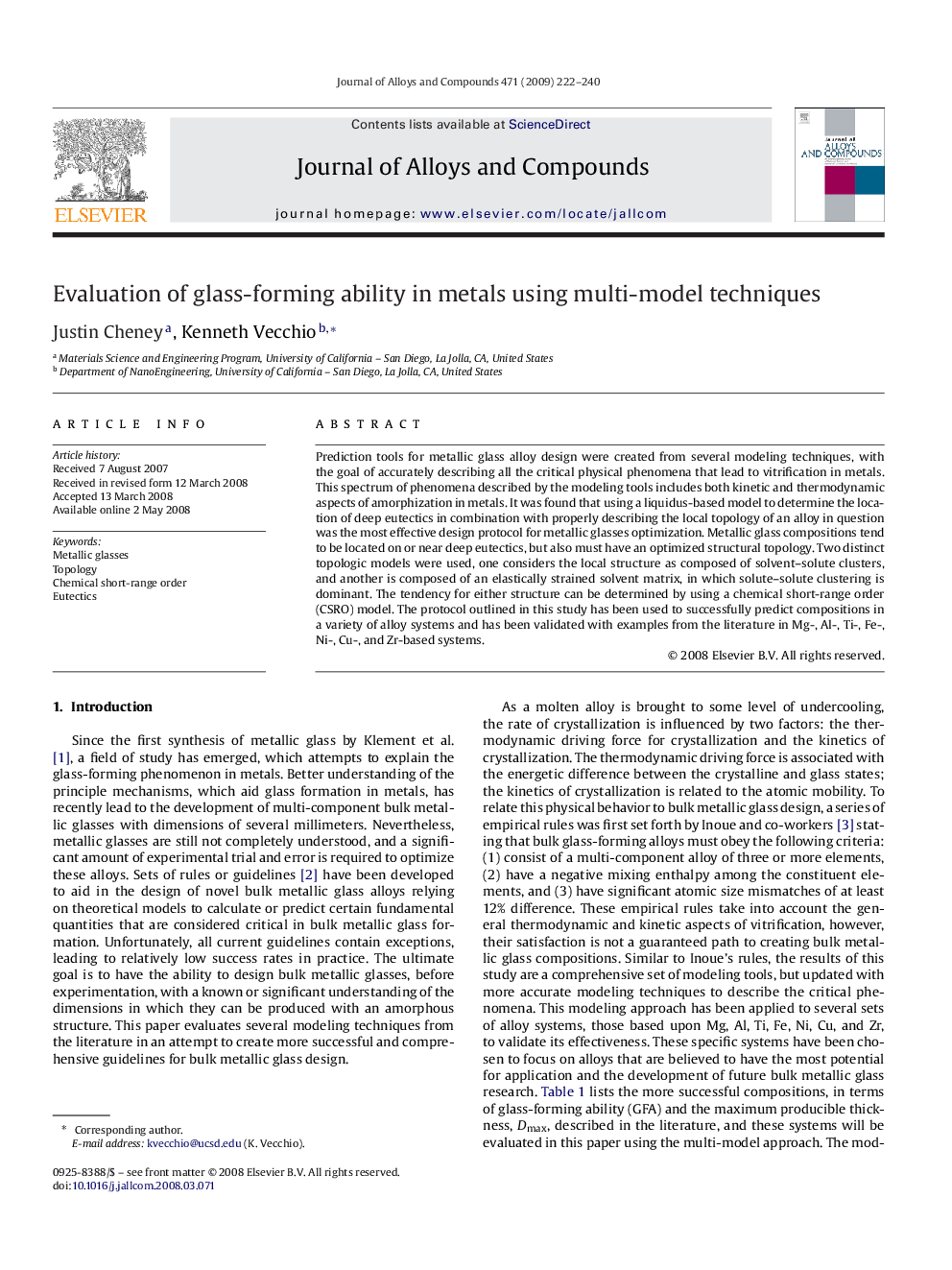| کد مقاله | کد نشریه | سال انتشار | مقاله انگلیسی | نسخه تمام متن |
|---|---|---|---|---|
| 1623482 | 1516406 | 2009 | 19 صفحه PDF | دانلود رایگان |
عنوان انگلیسی مقاله ISI
Evaluation of glass-forming ability in metals using multi-model techniques
دانلود مقاله + سفارش ترجمه
دانلود مقاله ISI انگلیسی
رایگان برای ایرانیان
کلمات کلیدی
موضوعات مرتبط
مهندسی و علوم پایه
مهندسی مواد
فلزات و آلیاژها
پیش نمایش صفحه اول مقاله

چکیده انگلیسی
Prediction tools for metallic glass alloy design were created from several modeling techniques, with the goal of accurately describing all the critical physical phenomena that lead to vitrification in metals. This spectrum of phenomena described by the modeling tools includes both kinetic and thermodynamic aspects of amorphization in metals. It was found that using a liquidus-based model to determine the location of deep eutectics in combination with properly describing the local topology of an alloy in question was the most effective design protocol for metallic glasses optimization. Metallic glass compositions tend to be located on or near deep eutectics, but also must have an optimized structural topology. Two distinct topologic models were used, one considers the local structure as composed of solvent-solute clusters, and another is composed of an elastically strained solvent matrix, in which solute-solute clustering is dominant. The tendency for either structure can be determined by using a chemical short-range order (CSRO) model. The protocol outlined in this study has been used to successfully predict compositions in a variety of alloy systems and has been validated with examples from the literature in Mg-, Al-, Ti-, Fe-, Ni-, Cu-, and Zr-based systems.
ناشر
Database: Elsevier - ScienceDirect (ساینس دایرکت)
Journal: Journal of Alloys and Compounds - Volume 471, Issues 1â2, 5 March 2009, Pages 222-240
Journal: Journal of Alloys and Compounds - Volume 471, Issues 1â2, 5 March 2009, Pages 222-240
نویسندگان
Justin Cheney, Kenneth Vecchio,